Do you struggle to stay awake during your night shift and toss and turn when trying to fall asleep after work? If you work the overnight shift, you know how hard it can be to regulate your sleep. Problems sleeping for night shift workers can occur due to disruption of their circadian rhythm.
Your circadian rhythm is your body’s natural internal clock. It regulates your 24-hour behavior processes, especially when you sleep and wake. But it also affects hormone release, digestion, and metabolism.
Various factors act as a zeitgeber on your circadian rhythm. A zeitgeber is an environmental or natural cue that synchronizes your internal clock. For humans, exposure to light is the most powerful zeitgeber for your circadian rhythm.
The article below explores:
- How bright light therapy works
- Its application for various sleep disorders
- And how you can improve your sleep and overall health.
Understanding Your Circadian Rhythm and Why Light Matters
What is the Circadian Rhythm?
Your circadian rhythm is your body's 24-hour natural internal cycle, encompassing various physiological processes such as wakefulness, sleep, digestion, and body temperature.
Your circadian rhythm is controlled by the suprachiasmatic nucleus (SCN). It's located in the brain where the optic nerves cross. Think of the SCN as the “master clock,” similar to an internal timing device.
The SCN synchronizes your body's circadian rhythm and functions such as:
- Hormone production, including cortisol and melatonin
- Body temperature
- And sleep-wake cycles.
Although the SCN has its own internal rhythm, it must be synchronized daily with the external environment. One of the most significant factors that synchronize the SCN is exposure to light.

The Role of Light as a "Zeitgeber"
The SCN gets signals from light, especially sunlight. These signals help control hormones that affect the sleep-wake cycle. The process starts when you wake up in the morning.
When the sun's light enters the eye through the retina, it hits special cells called retinal ganglion cells. These cells contain melanopsin, a pigment that is sensitive to light. Melanopsin responds to blue light, the same wavelength as the morning sun, and sends non-visual signals to the SCN. The SCN interprets the light as daytime, responds by:
- Increasing cortisol to wake you up
- And suppresses melatonin, which helps you fall asleep.
As light levels drop at night, the decrease in light tells the SCN to make melatonin. This hormone helps prepare you for sleep.
Both natural and artificial light can have a significant impact on this system and your circadian rhythm. For example, getting natural sunlight can help keep your circadian rhythm in sync. It reduces melatonin and increases wakeful hormones like cortisol.
However, being exposed to artificial light in the evening can confuse your body’s internal clock. It may think it is still daytime and keep melatonin levels low. This makes it hard to fall asleep.
Research and studies further elucidate the biological mechanisms that affect the circadian rhythm. Research published in Nature Reviews Genetics indicates that the SCN coordinates the body's 24 rhythms through hormonal and neuronal signals. Environmental cues, primarily light, influence these.

What is Light Therapy and How Does it Work?
Light therapy (also called phototherapy) involves exposure to a specific intensity of artificial light to regulate your internal clock.
Light therapy for circadian rhythm disorders differs from regular indoor lighting in brightness, intensity, and color composition. For example, circadian rhythm light therapy is designed to emit 10,000 lux, which is a measure of brightness. This is similar to the brightness of outdoor light about an hour after sunrise.
Typically, regular indoor lighting emits only 500 lux. This is way too dim to affect the SCN and circadian rhythm.
Another key difference is the spectrum of light emitted. Circadian light therapy lamps typically produce a broad-spectrum light that mimics natural sunlight but filters out UV rays. Regular indoor lighting creates a cool or warm spectrum that does not mimic natural sunlight.
The Science Behind the Process
The timing of light exposure is crucial in treating the circadian mismatch you may have. Timing varies depending on whether you need to delay or advance your circadian rhythm.
- Morning light: If you want to advance your internal clock and fall asleep earlier, getting morning light shortly after waking up is most effective. A dose of morning light promotes cortisol production, helps you wake up, and suppresses melatonin. However, morning light also helps stimulate the release of melatonin at night, which in turn enables you to sleep. This is effective for delayed sleep phase disorder (DSPS).
- Evening light: If you want to delay your internal clock and fall asleep later in the day, expose yourself to bright light in the late afternoon or early evening. The light exposure suppresses melatonin, helping you stay awake for a bit longer. Evening light exposure is a helpful treatment for advanced sleep phase disorder.
Common Conditions Treated with Light Therapy
Light therapy may be helpful for various types of conditions, including the following:
Circadian Rhythm Sleep Disorders
- Delayed Sleep Phase Disorder (DSPS): This sleep disorder occurs when a sleep cycle is significantly delayed compared to typical sleep and wake times. It includes night owls struggling to fall asleep until early morning.
- Advanced Sleep Phase Disorder (ASPD): ASPD is a circadian rhythm disorder characterized by a sleep schedule that shifts significantly earlier than usual. Think of it as early birds who wake up well before dawn.
- Non-24-Hour Sleep-Wake Rhythm Disorder: This sleep disorder occurs when a person's internal body clock is not synchronized within a 24-hour day-night cycle. This commonly occurs in individuals who are blind.
Other Applications
Light therapy may also have other applications, including those listed below.
Seasonal Affective Disorder (SAD)
Reduced sunlight in the winter can disrupt circadian rhythms and serotonin production, leading to a low mood. Light therapy can help regulate the circadian rhythm, increase serotonin production, and improve mood.
Users of light therapy agree that it can make a significant impact on their well-being.
“I live on an island in the northwest, where we get minimal sun in the winter. My mood was starting to decline due to the lack of sunshine. Light therapy has almost completely cured my seasonal depression. I'm so happy I started therapy.” Megan A. Light therapy user.
Shift Work Disorder
Those who work night or rotating shifts go against their natural internal circadian rhythm. They stay awake overnight and try to sleep during the day. As a result, their internal biological clock remains out of sync with their sleep and work schedules. Exposure to light therapy may help suppress melatonin when needed during their work hours.
A 2023 randomized trial published in Sleep Health studied the use of light therapy on individuals rotating shifts. The study involved 57 nurses who worked full-time, rapidly rotating shifts. The participants were divided into two groups:
- One group aimed to improve circadian alignment using evening light exposure.
- The other group aimed to relieve fatigue through modifying their diet.
All participants completed measurements of fatigue, sleepiness, mood, and work-related errors for 30 days. The group that received light therapy to improve circadian alignment reported:
- A 67% reduction in errors
- And reduced fatigue compared to the control group.
Jet Lag
Jet lag occurs when there's a disruption in your circadian rhythm from crossing time zones quickly than your body can adjust. Light therapy can help by changing your circadian rhythm to align with the new time zone and your day-night schedule.
Your Light Therapy Practice: A Step-by-Step Guide
There are different types of light therapy devices, including:
- Light boxes
- Dawn simulators
- Specialized lamps
There are certain key features to look for when choosing a circadian rhythm light therapy device, including:
- LUX: Select a lamp with an output of 10,000 LUX light intensity.
- Color temperature: The color temperature is the coolness or warmth of the light. Select a device that offers adjustable color temperature, ranging from cool white to daylight white, to mimic natural sunlight.
- UV-filtered light: Your light therapy lamp should filter out damaging UV light.
- Angle: Choose a light therapy device that allows you to adjust the angle to achieve the exact position you want.
Consider some of the following options:

Timing is Everything
Getting the timing right when using a lightbox is essential to treat the specific disorder you may have.
The chart below provides timing recommendations, including the optimal time of day to use your light box and the recommended duration. Please note that the recommendations below are general in nature. It's always best to speak to a healthcare provider about your specific circumstances.
|
Condition |
Ideal Time to Use |
Duration |
Goal |
|
Delayed Sleep Phase Disorder |
Shortly after waking in the morning |
20 to 30 minutes |
Advance sleep onset, and go to sleep earlier |
|
Advanced Sleep Phase Disorder |
Late afternoon/early evening |
20 to 30 minutes |
To delay sleep time, stay awake later |
|
Shift Work Disorder |
Shortly before starting a night shift |
20 to 40 minutes |
Stay alert during the shift |
|
Seasonal Affective Disorder |
Early morning |
20 to 30 minutes |
Promote serotonin, regulate circadian rhythm and improve mood |
Best Practices for an Effective Session
To get the most effective light therapy session, following best practices is vital. For instance, it is helpful to angle the light therapy device correctly. You should not stare directly into the light. Instead, you want the light shining down towards you at an angle to mimic natural sunlight.
One of the most critical factors is maintaining consistency with light therapy. Regardless of the time of day you're using light therapy, it's helpful to make it a part of your daily routine. This helps to maintain consistency.
Incorporating light therapy into your day may be easier if you combine it with activities such as:
- Working at your desk
- Reading
- Or journaling.
Potential Side Effects and Safety
Light therapy for circadian rhythm disorders is generally safe for most people. However, some people may experience mild side effects, such as eye strain or headaches. Typically, side effects are mild and manageable. You can reduce side effects by following the manufacturer's recommendations for light therapy and not exceeding the recommended session time.
It is always essential to consult a doctor before starting light therapy. This is especially important for those with certain conditions, such as bipolar disorder. Conditions like these can trigger hypermania from light exposure. Other possible contraindications for light therapy include:
- Certain eye conditions
- Using medications that cause photosensitivity
- Conditions that cause increased light sensitivity, such as lupus
Light as Part of a Holistic Approach to Sleep Health
Light therapy is most effective when combined with other healthy sleep habits as part of a holistic approach to improving sleep.
The Importance of a Regular Sleep Schedule
Maintaining a regular sleep-wake schedule, even on weekends, is essential to reinforce your internal circadian rhythm.
Creating a Sleep-Friendly Environment
Creating the correct type of environment can promote better rest and improved sleep quality. Most people sleep best in a dark, quiet, and cool bedroom. Additionally, choose a mattress that is neither too soft nor too firm.
Limiting Evening Light Exposure
Exposure to blue light from screens at night can hurt your sleep, suppressing melatonin production. Try to limit screen time a few hours before bed. Instead, switch to a bedtime routine involving relaxing activities, such as:
- Deep breathing exercises
- Listening to music
- Or light reading.
Additionally, consider using blue-light-blocking glasses. Or dim the lights in the evening an hour or two before bed.
Conclusion: Embrace the Power of Light
Exposure to light therapy can help regulate your circadian rhythm and enhance sleep quality. Light therapy can mimic natural sunlight exposure and help promote a natural circadian rhythm. Light therapy is an excellent natural, non-invasive tool for promoting better sleep and overall health.
Visit our comprehensive collection of bright light therapy lamps, designed based on expert recommendations. Since 1993, we've developed and manufactured lamps that meet the rigorous standards of healthcare professionals.
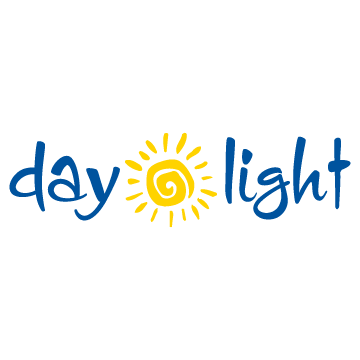
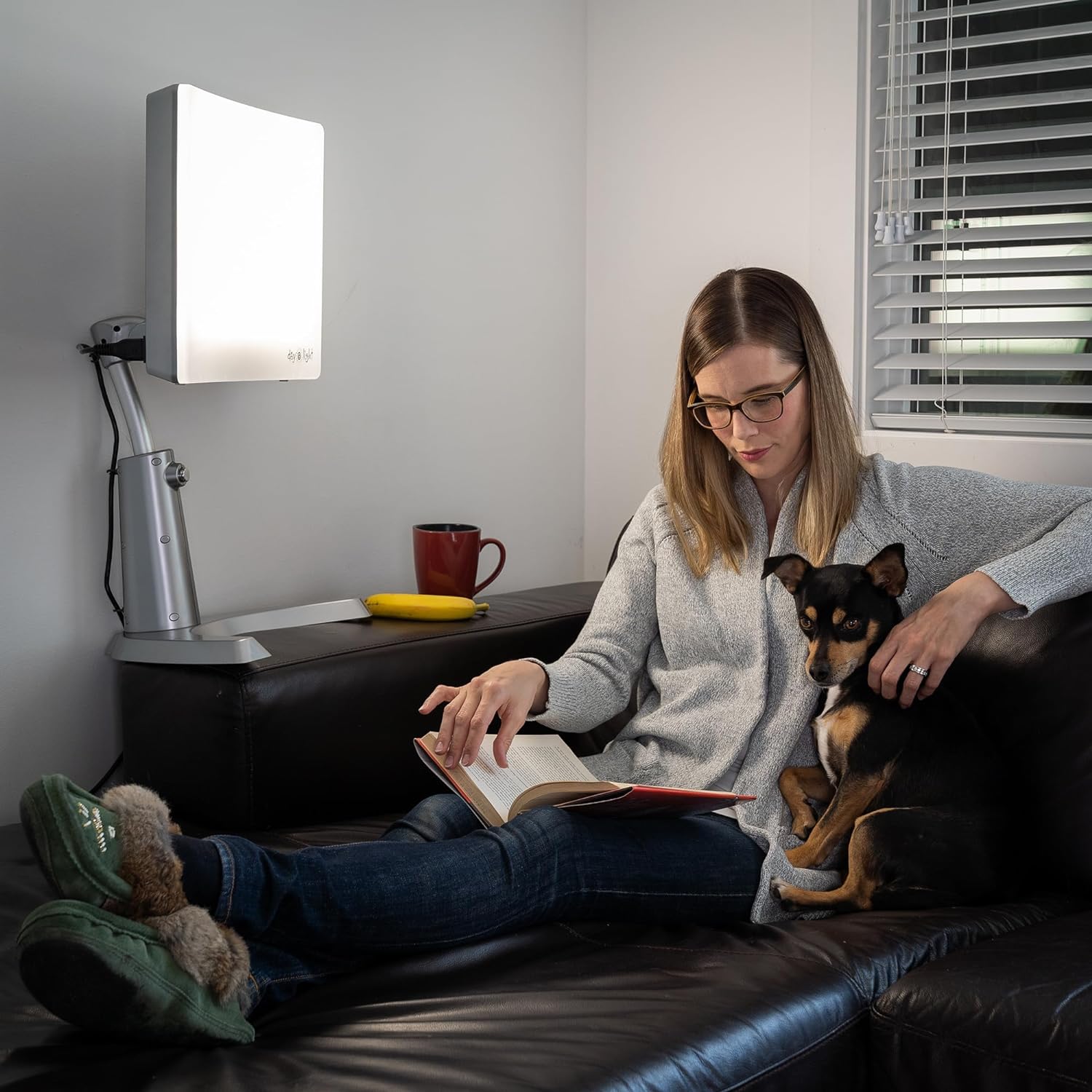
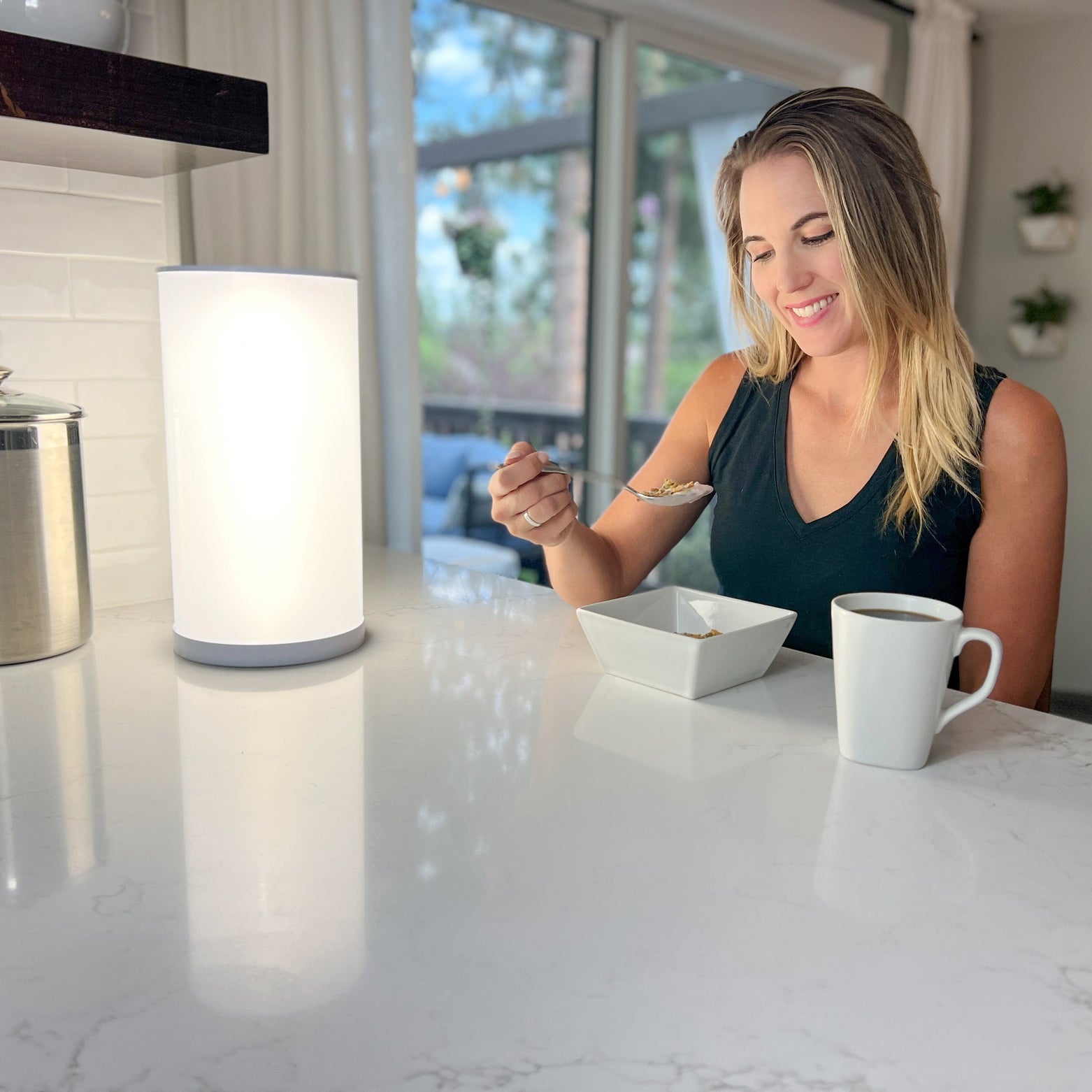
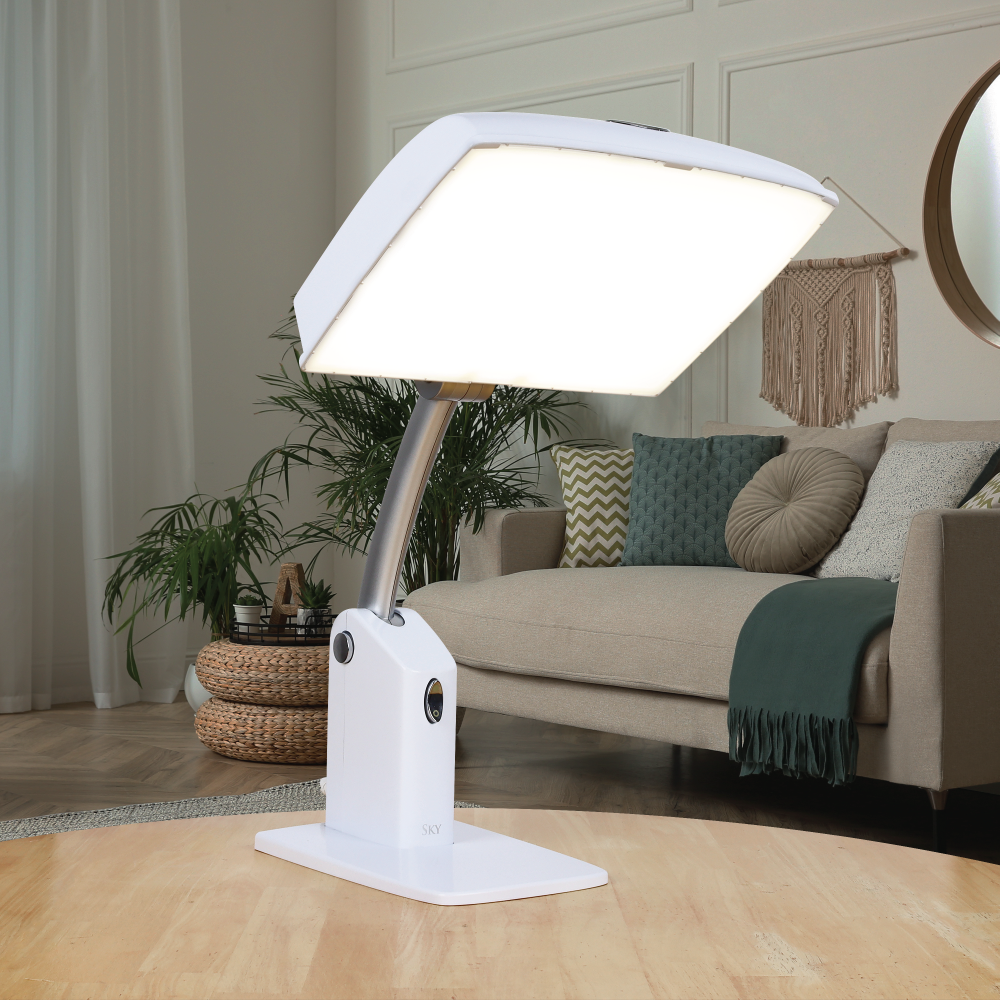
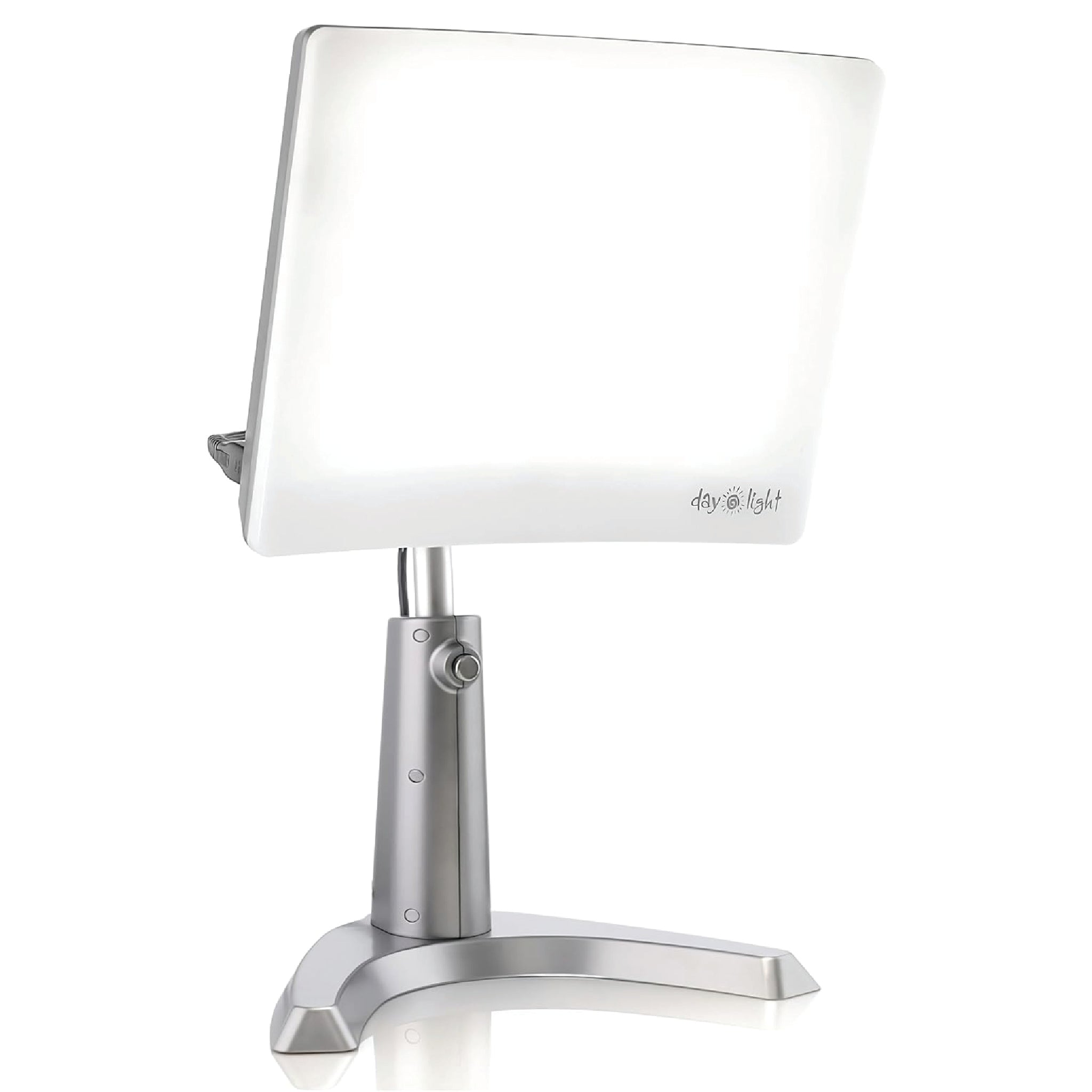
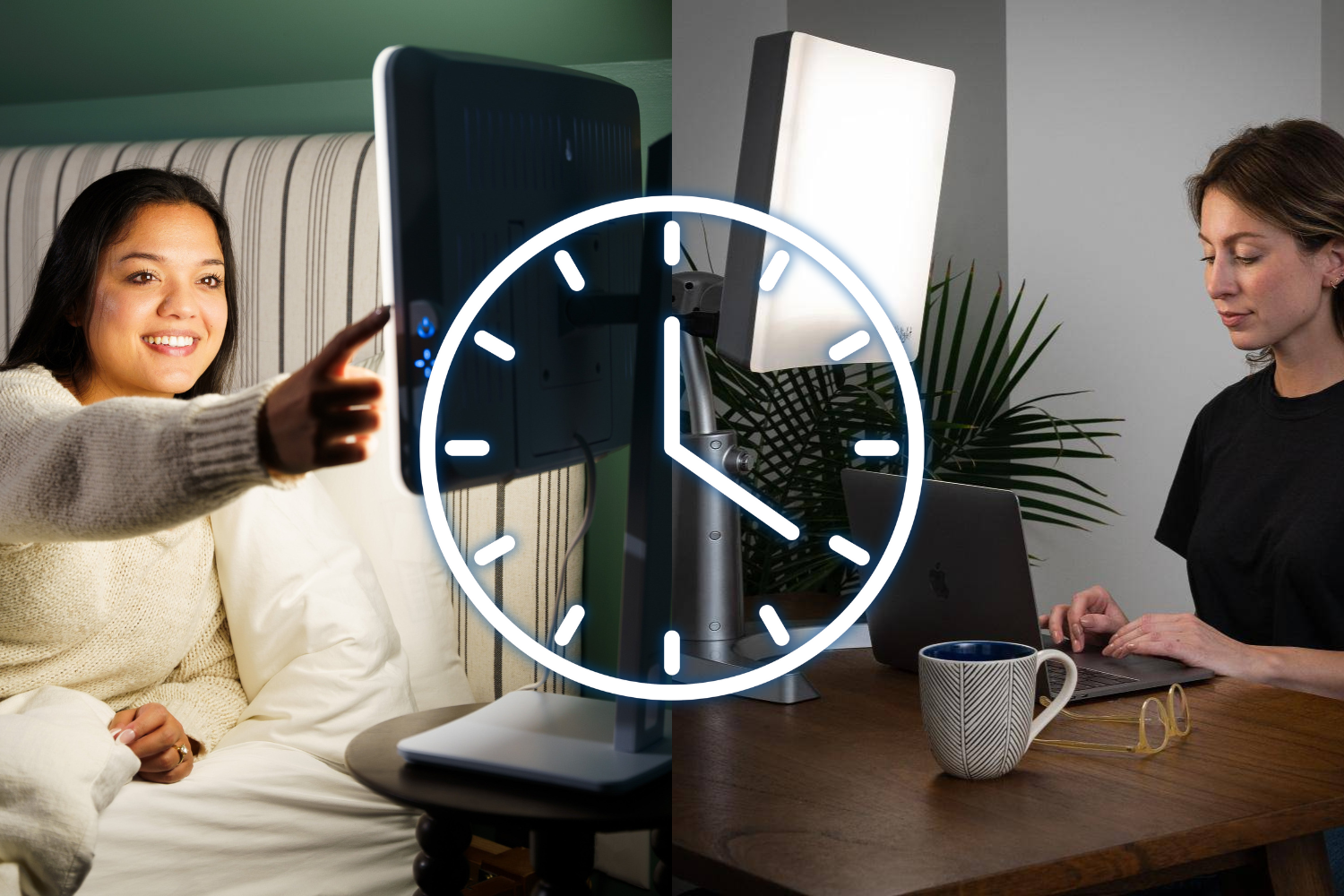
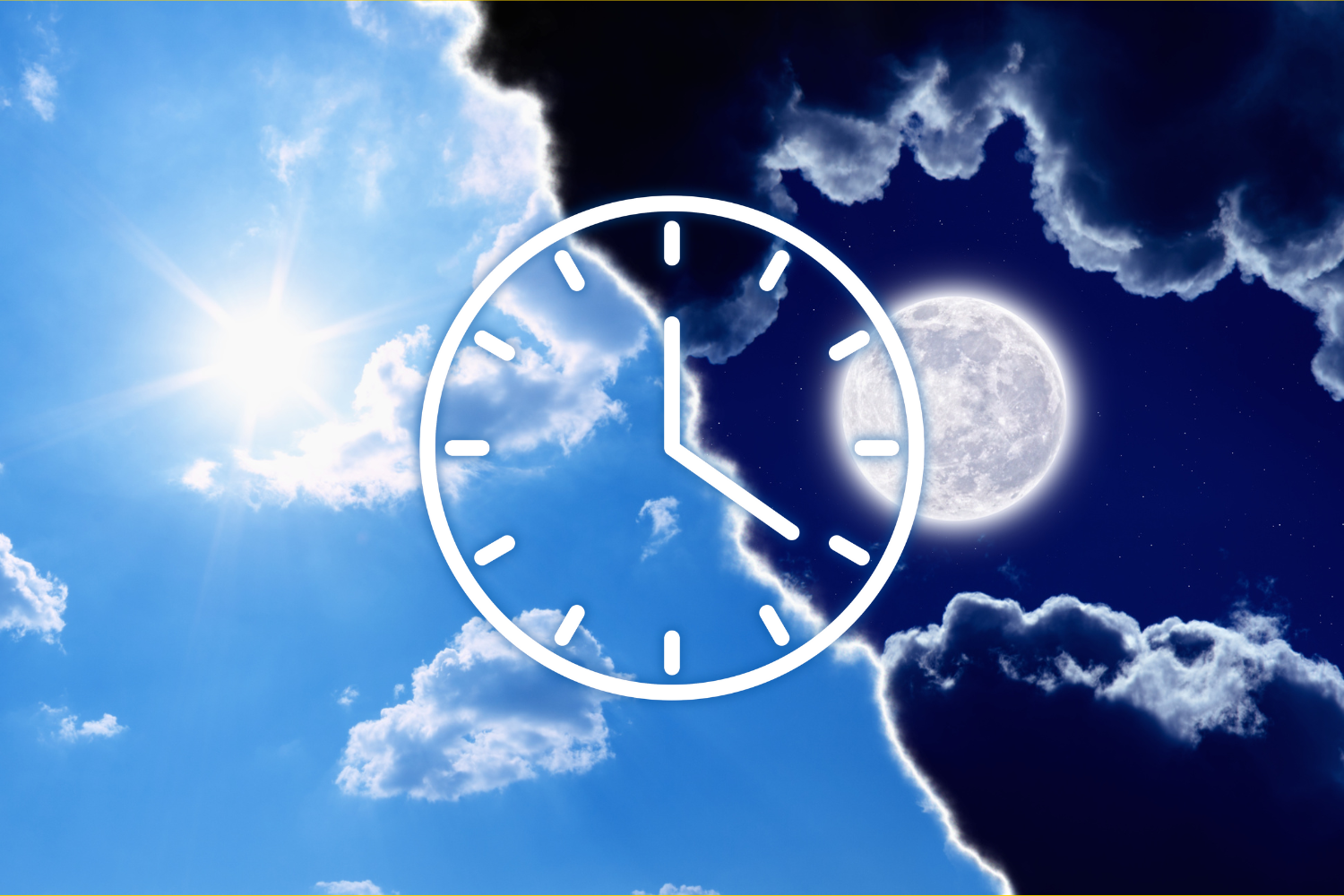
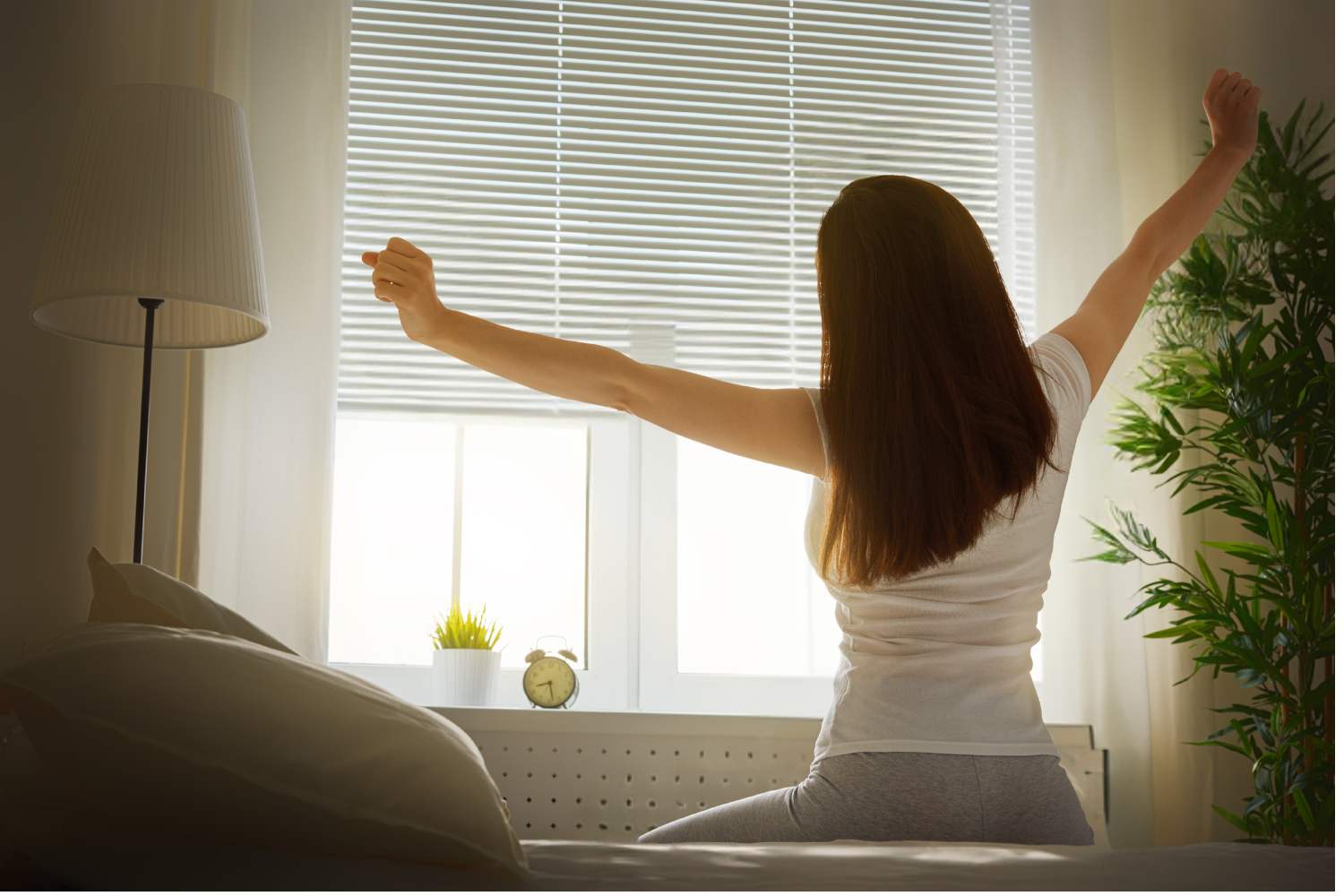
Leave a comment
All comments are moderated before being published.
This site is protected by hCaptcha and the hCaptcha Privacy Policy and Terms of Service apply.